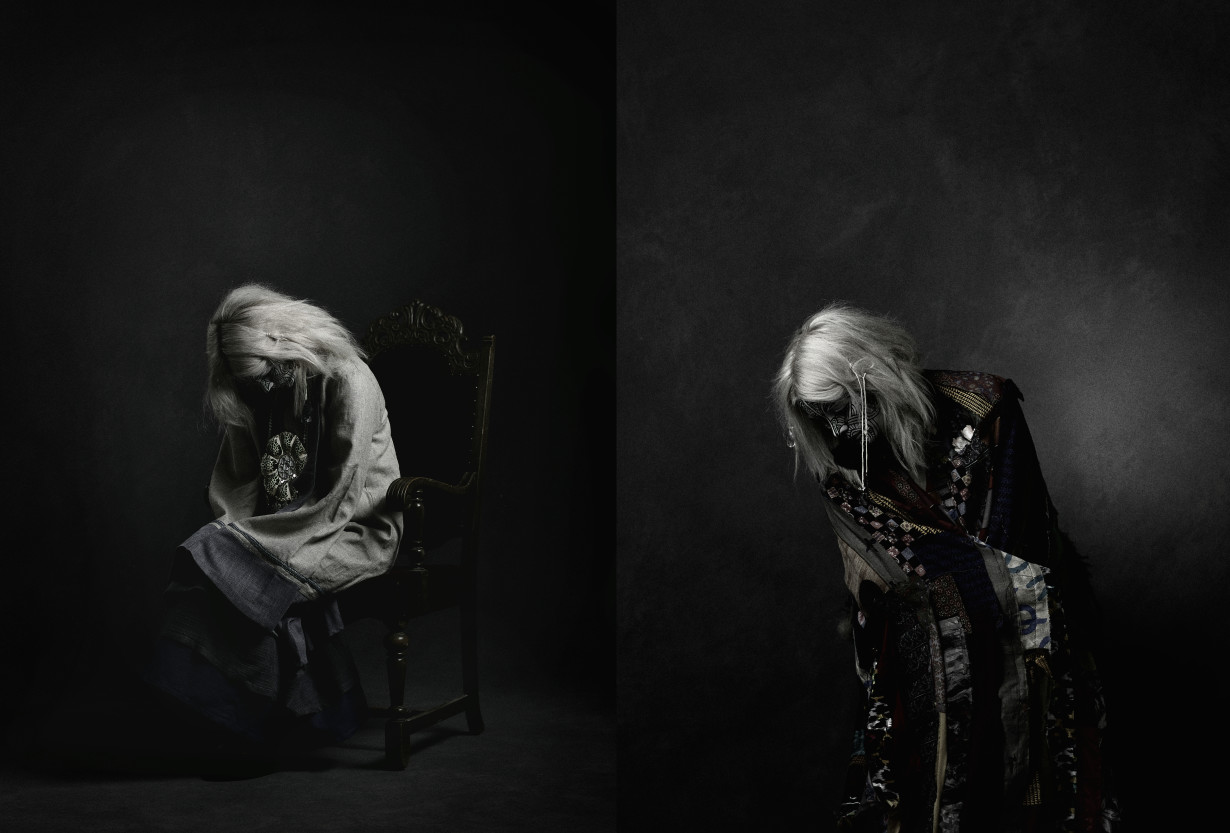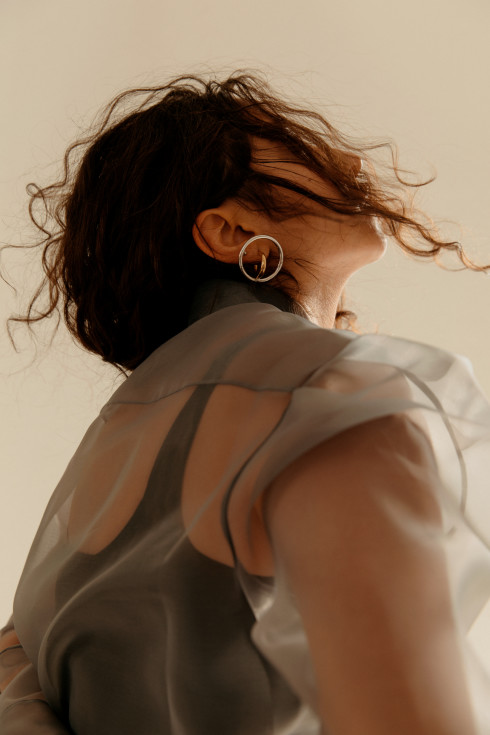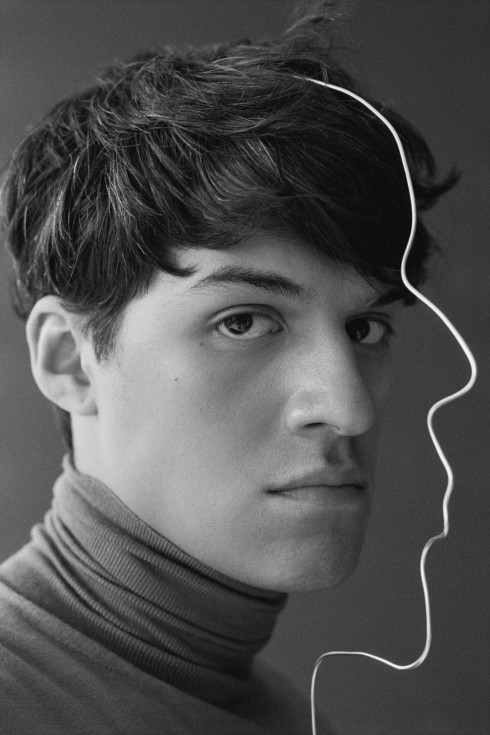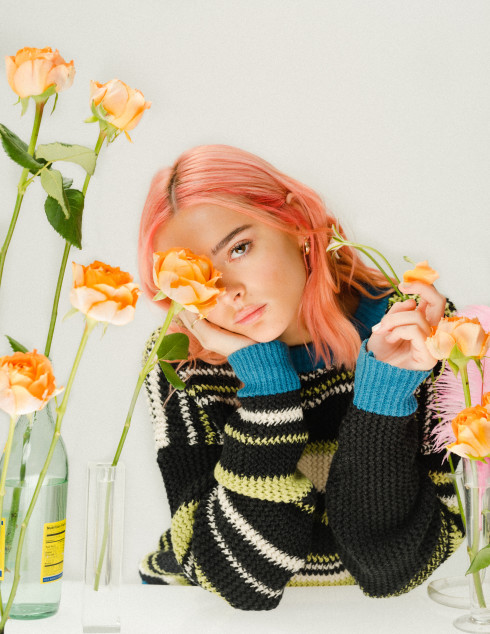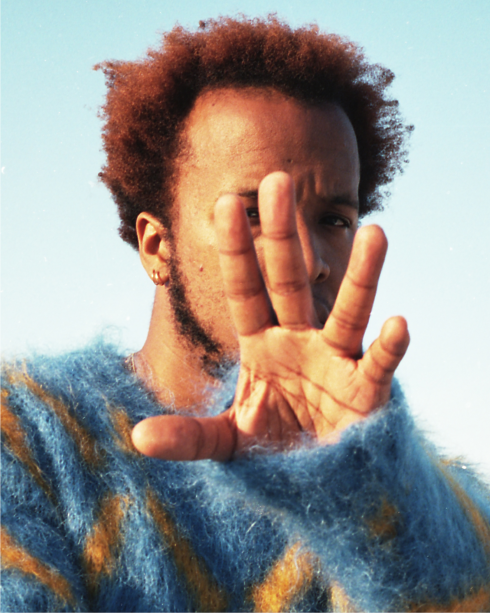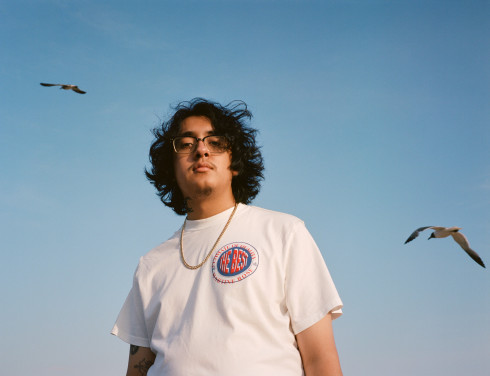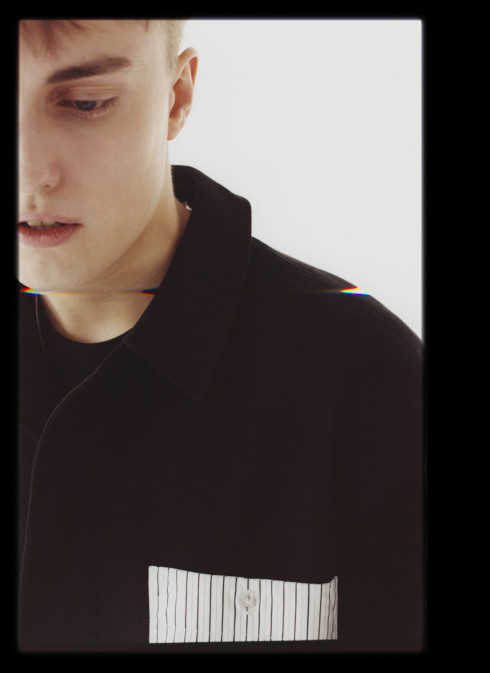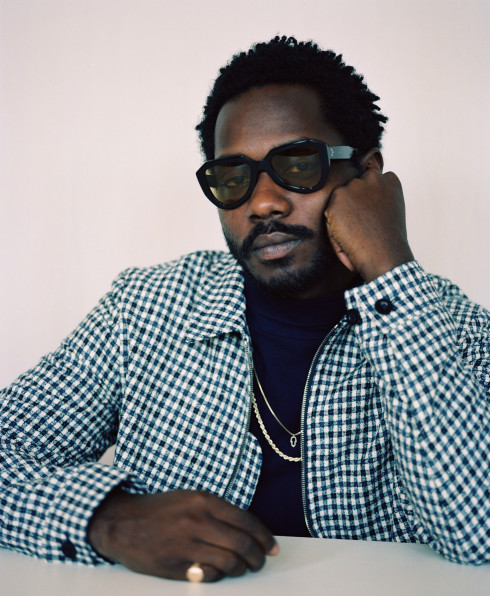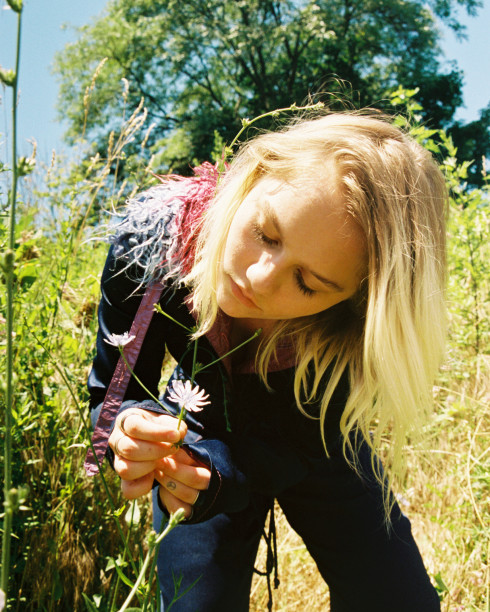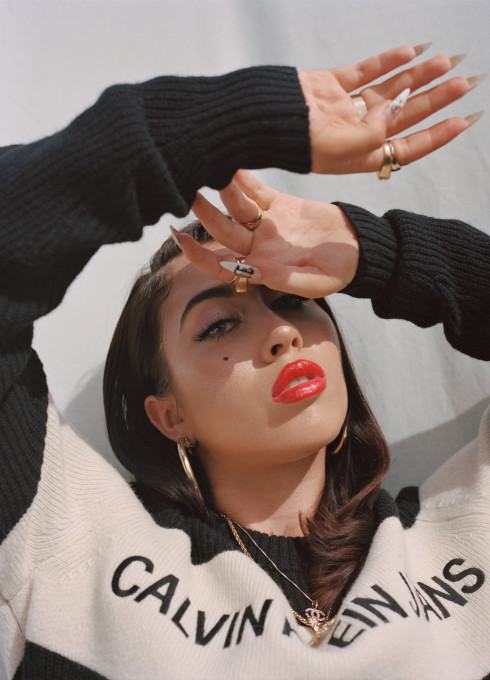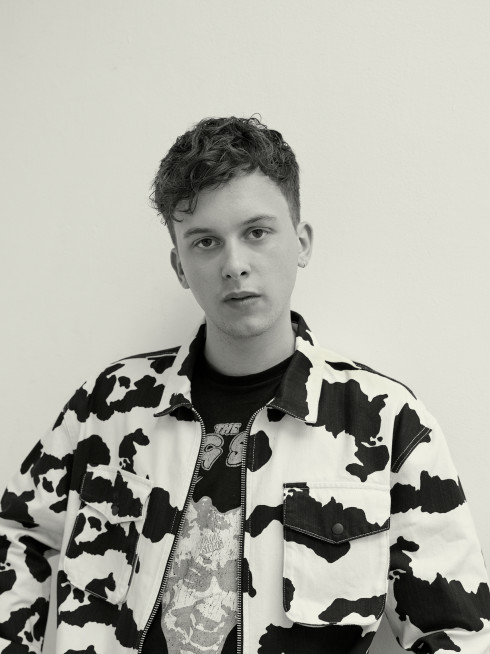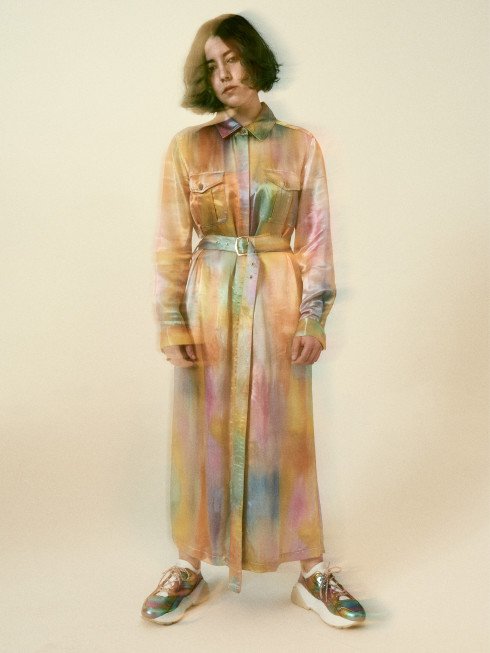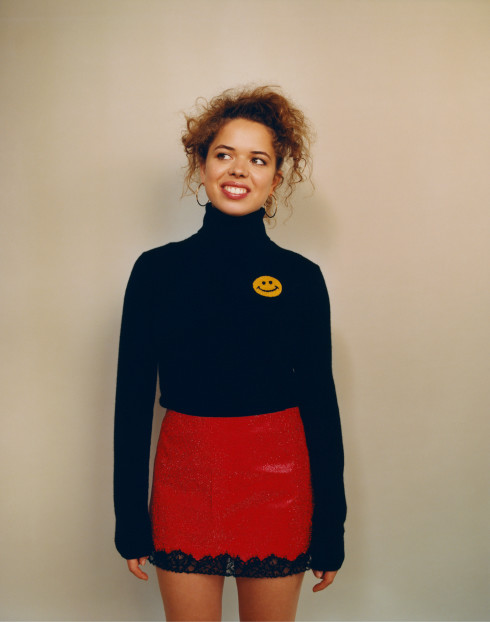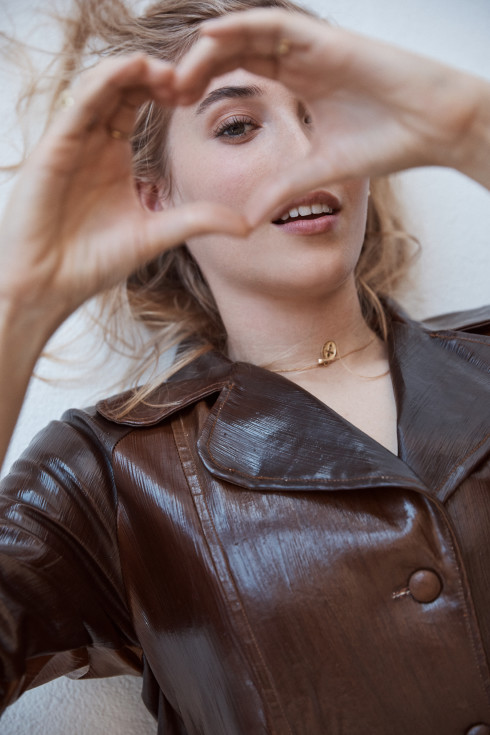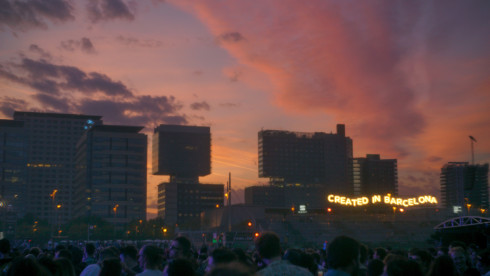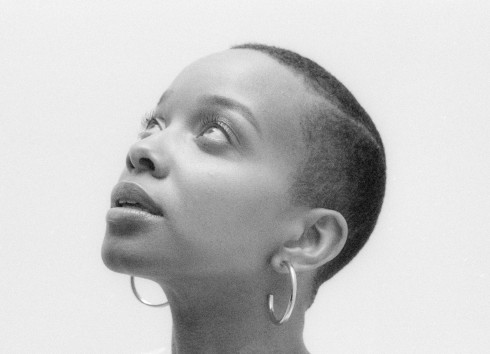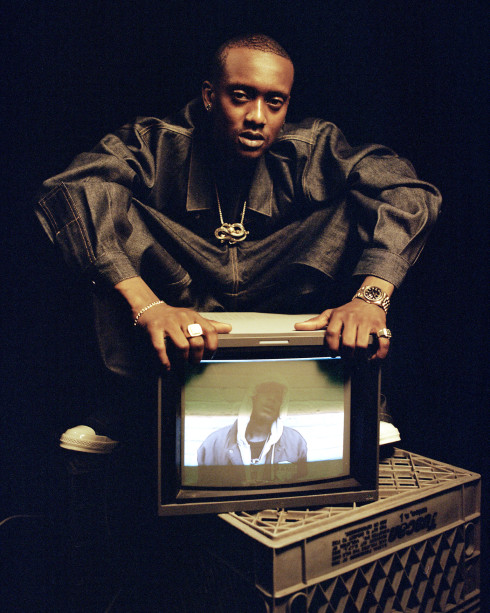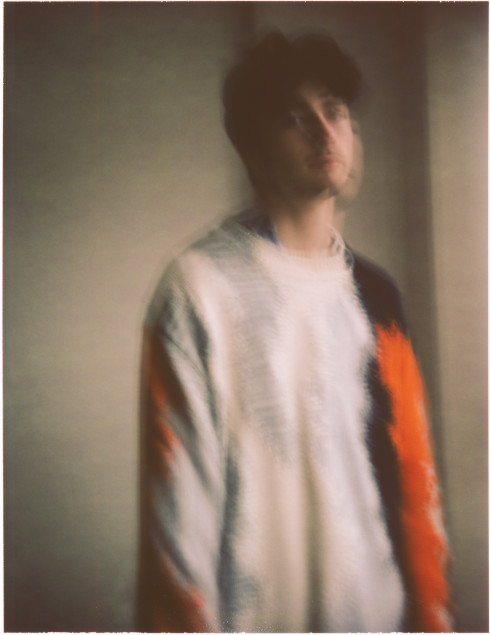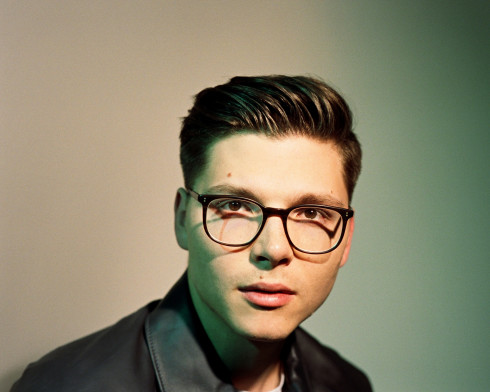- Text and Photography by
- Johan Renck
Makeup and costume by Niki Lindroth von Bahr. Hair by Martina Senke at Mika’s. Photographer’s assistant: Felix Odell. Production: Magdalena Larsson. Production assistant: Ida Manneh
FEVER RAY
Originally published in the Fall 2009 issue.
Singer Fever Ray pushes music and performance into the nether reaches of the avant-garde. She’s harnessed the power of visuals, video, and the internet to define a stunning stage persona, backed up by her intensely feeling and beautifully twisted songs. Here she talks with director Johan Renck about the importance of contrasts, the death of pop music, and why Pink Floyd had it right so many years ago.
JOHAN RENCK: Let’s talk a little bit about feelings in general, and how they translate into art. What’s your favorite feeling?
FEVER RAY: I guess happiness is the best feeling to have and the one you wish you had more of.
That’s interesting because I’m starting to feel that way a little bit as I get older. When I was younger, my favorite feeling was definitely melancholy.
Yes, but melancholy is a huge part of your life anyway, and you have these very short moments of happiness. So once you’ve felt it, you want more of it. I didn’t really know about happiness when I was young.
I completely agree. I’m asking because I feel so many emotions when I experience your music. It just makes me curious what state you like to be in when all this is made. When we talk about Fever Ray, the music has a certain darkness, but there’s also hope to it, and when you see the visual side of it, it’s fucked up in a way that puts a smile on your face.
[Laughs] It’s more believable when there are contrasts. That’s some- thing I learned in art school, that you can’t paint black with black. You always need nuances around it. I also think laughter is good company.
It is good company. I saw you guys when you played at Kägelbanan here in Stockholm, and I was so exhilarated and happy because there was such a focused feeling on stage, but at the same time there was fun and joy in a weird way. It’s interesting how you end up in that situation.
I work with a lot of good people. I think it’s very important to laugh at the things we do. That’s the best way to deal with the shit. I work a lot with Andreas Nilsson, who likes to do weird stuff. It’s like a chemical experiment with all these different people playing together.
I think the last tour you did with the Knife, and your Fever Ray show now, were two of the best performances I’ve seen in my life. There’s definitely the chemical reaction there between you, your music, and Andreas. Do you feel that at some point, you create something, and you just have to let it go and it becomes what it becomes?
Absolutely. We released the last Knife album in 2006, and then I think I let it go very soon after that. And people have a lot of ideas and theories about what we are doing, but I can’t read that or listen to that.
I think good art is a translation of an inner feeling or an emotion into something tangible. You try to embody it in something, if it’s a song or a video or a painting or whatever it is. What would happen if you didn’t have that outlet?
[Laughs] I don’t want to think about it. I think it doesn’t necessarily have to be music. I think it could have been something else. I mean, I like film and images.
Fever Ray is also not only about music.
No. I’ve been working so much on the videos and stage shows as well.
I have this theory that pop music and the way we know it is kind of dying because it’s not a tool for revolution anymore. Pop music, when it was good, used to carry some messages or some anger or some love or hate. Now it’s just background music.
You can’t listen to national radio in Sweden anymore. It’s impossible. They only play music from the digital download list and the three big record labels that still exist. It’s very strange.
But every time the world moves into a phase like that, that’s when interesting stuff starts happening in music. A lot of reactions come from that, as well as new ways of making music. To me, it’s kind of a good thing.
What’s your relationship with music nowadays?
Well I do one video a year because I’m not that interested anymore. I probably listen to more music now than I did before, but I think it has more to do with trying to find something that really moves me. I think what you’re doing with Fever Ray and the Knife is all so enormously interesting. It moves me in a way I want to be moved. Just to go see a show and carry it with you because it contains so many levels of emotions and feelings. You laugh, you feel sad, you have fun, and you’re mesmerized for an hour. That’s what Pink Floyd did at some point, when they were really good. I kind of miss that. I love to go and be blown away by both the music and the visuals.
I like your reference to Pink Floyd, because I re- member The Wall and what they did around that album when they went live. It was so impressive. I want everything when I go to a show. Otherwise you can stay home and watch a video instead.
- Text and Photography by
- Johan Renck
Makeup and costume by Niki Lindroth von Bahr. Hair by Martina Senke at Mika’s. Photographer’s assistant: Felix Odell. Production: Magdalena Larsson. Production assistant: Ida Manneh
